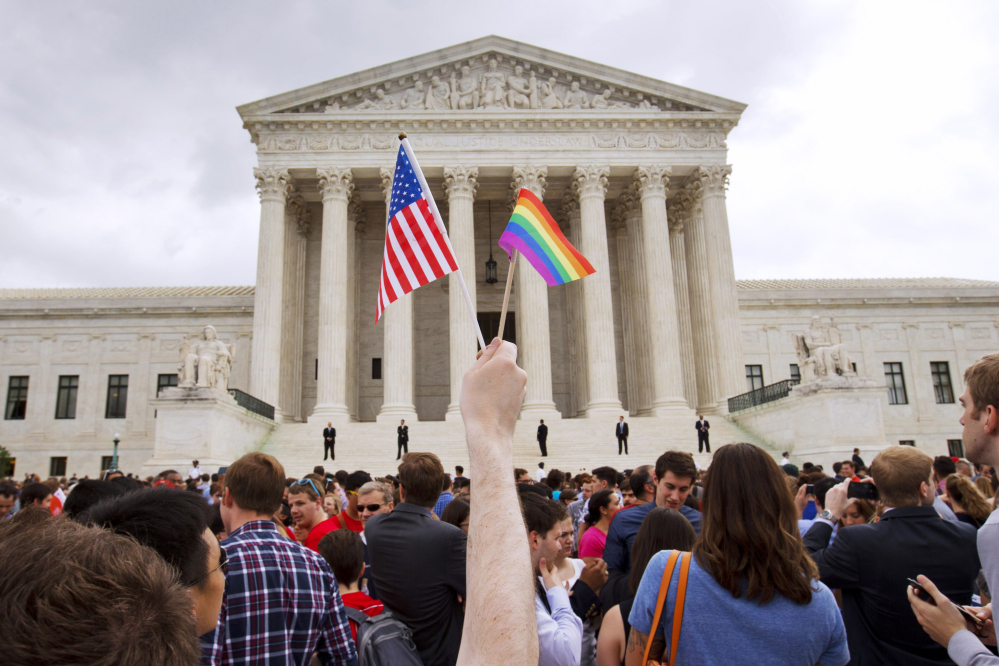WASHINGTON — Protesters do not have a First Amendment right to congregate on the grand marble plaza in front of the Supreme Court, only on the sidewalk in front of it, a unanimous federal appeals court panel ruled Friday.
A panel of the U.S. Court of Appeals for the D.C. Circuit upheld a law that forbids demonstrations on the grounds of the high court, on the premise that demonstrations on the court’s doorsteps might lead to the perception that the court is swayed by public opinion rather than the dictates of the law.
The law, passed in 1949, “promotes the understanding that the Court resolves the matters before it without regard to political pressure or public opinion,” wrote U.S. Circuit Judge Sri Srinivasan, who has argued often before the court as a lawyer and is sometimes mentioned as a possible future inhabitant of the Supreme Court building.
“Allowing demonstrations directed at the Court, on the Court’s own front terrace, would tend to yield the opposite impression: that of a Court engaged with – and potentially vulnerable to – outside entreaties by the public.”
The Supreme Court itself, in 1983, ruled that the sidewalks surrounding the court are open for protests, and any passerby on a day when the justices hear a controversial case will find the 50-foot wide sidewalks packed with demonstrators.
But the 252-by-98-foot oval marble plaza – with its two fountains, benches, flagpoles and steps leading to the court’s iconic bronze doors – are off-limits to protesters.
In 2013, U.S. District Judge Beryl Howell struck down the restrictions.
The challenge was brought by Harold Hodge of southern Maryland, who was arrested in January 2011 for standing on the plaza wearing a 3-by-2 foot sign that said, “The U.S. Gov. Allows Police to Illegally Murder and Brutalize African Americans And Hispanic People.”
But Srinivasan said that while Congress could declare the plaza open for protests if it wished, it was within its powers to limit demonstrations to preserve the decorum of the court and to promote “the appearance and actuality” of impartiality.
He added: “Unless demonstrations are to be freely allowed inside the Supreme Court building itself, a line must be drawn somewhere along the route from the street to the Court’s front entrance. … Among the options, it is fully reasonable for that line to be fixed at the point one leaves the concrete public sidewalk and enters the marble steps to the Court’s plaza.”
Srinivasan was joined by Circuit Judge Karen LeCraft Henderson and Senior Circuit Judge Stephen Williams.
Copy the Story LinkSend questions/comments to the editors.



Success. Please wait for the page to reload. If the page does not reload within 5 seconds, please refresh the page.
Enter your email and password to access comments.
Hi, to comment on stories you must . This profile is in addition to your subscription and website login.
Already have a commenting profile? .
Invalid username/password.
Please check your email to confirm and complete your registration.
Only subscribers are eligible to post comments. Please subscribe or login first for digital access. Here’s why.
Use the form below to reset your password. When you've submitted your account email, we will send an email with a reset code.